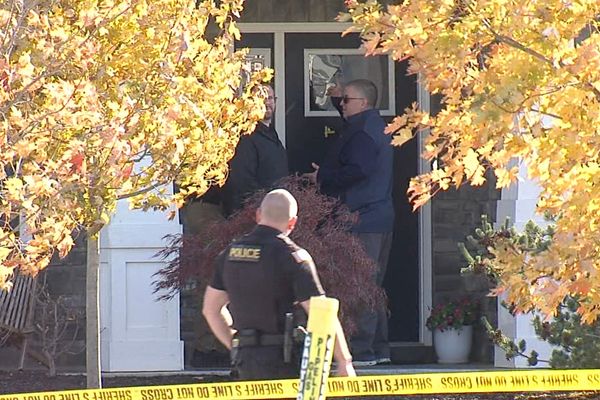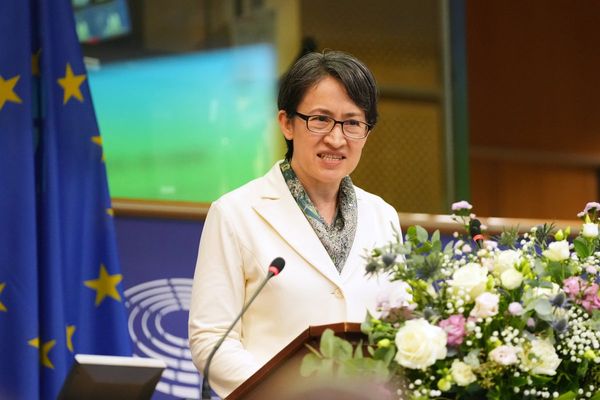
Some days in the classroom, it can seem as though the place has a life of its own. Children go from one activity to the next, voices jostle for space, and blocks scatter across the floor. But buried in that energy are moments (a child hesitating to join a game, another lining up the toys just so, a teacher kneeling to ask how another child is feeling). It is in these interactions, as teachers weave safety into the flow of the day, that the heart of a classroom comes alive. How safe a classroom is cannot be measured with a checklist.
Safety in the classroom is more organic than that. It requires teachers to see what is happening, to meet children’s needs with intention, and to improvise as they go. It is less science and more art. It is work that is untidy and often unpredictable but done well is essential to how children learn, play, and engage with their peers.
So let’s focus on how early childhood teachers create learning environments that are not just safe but also foster children’s risk-taking, exploration, and curiosity.
Preparing Educators for Safe, Supportive Classrooms
A Certificate III in Early Childhood Education is often the first step for educators entering the field. It introduces educators to key concepts about how to notice children’s needs in the moment. Strategies for observing and responding to children’s behaviours, resolving minor conflicts, and prompting cooperation instead of merely issuing commands are covered.
Workshops, short courses, and specialised training (e.g., in inclusive education, trauma-informed practices, first aid) can help teachers stay current with best practices. They also help teachers refine observation skills and intervention techniques for the various scenarios they might face.
Mentoring and peer learning are valuable resources. Less experienced educators can benefit from guidance and support from more experienced teachers who can model practical strategies, offer feedback, and share tips that aren’t covered in textbooks. Mentors can also help new teachers apply theory to real situations through reflective discussion, which builds confidence and competence.
Understanding the Importance of Safe, Supportive Learning Spaces
When students enter a classroom, they carry more than backpacks and lunches; they also carry their emotions, their inquisitiveness, and sometimes their fears. In early childhood education, a secure environment is one where all of these aspects are recognised and appreciated. Kids are more likely to let go of fear and worry and explore their surroundings, whether it be a question, an activity, or a boundary.
The consequences don’t stop at conduct, either. A sense of security also has an impact on how children regulate their feelings, how they connect with their peers, and even how they approach new learning. Students who believe that the classroom is a secure and consistent place are more willing to take calculated risks, try new activities, and participate actively with classmates.
Safety also has an emotional aspect that includes the unspoken understanding that students are recognised, that their emotions are valued, and that adults will respond with sensitivity. This combination of emotional and physical security is the invisible framework that supports children’s social, emotional, and cognitive development.
Practical Classroom Techniques
Simple changes, small systems, and intentional designs can have a significant impact on children's feelings of safety and support.
Here, we'll explore practical ways educators can structure their classrooms to promote the success of all children.
Designing a Safe Physical Environment
Ensuring a safe classroom environment isn't about simply luck. It's a result of tending to the small details that make a space childproof. Securing shelves, keeping cords tucked away and ensuring that the environment is free of choking hazards and other objects are all very important. Safety also takes into account a child's need for spatial awareness.
Classrooms with accessible materials and flexible environments allow children to explore the world around them without fear of getting into unsafe situations. A child who can access materials, modify an area to play, work or learn, and choose how to spend their time is not only set up for independent play, but is also given the space and the tools to be a confident learner.
Using Play to Promote Safety and Social Skills
Play is where children learn some of their most important lessons. In fact, it’s also one of the most effective tools for creating safe, supportive classrooms. Guided play activities allow educators to observe children, step in when necessary, and guide children with gentle lessons on social rules, problem-solving and cooperation.
Cooperative games and conflict-resolution exercises can help children practice sharing, negotiating and regulating emotions in real time, while also having fun. Of course, let’s not forget physical exercise in childcare can also be key to helping children develop coordination, confidence and spatial awareness – all skills that lead directly to greater safety and independence in the classroom.
Observing and Responding to Children’s Needs
Observing or paying close attention to children is key to developing a safe classroom environment. This means watching for the subtle cues of a child who is struggling to join a group game, the child frowning during storytime, or the child who is leaping out of their seat at the excitement of a new activity. It does not necessarily mean constantly jumping in to assist or solve a problem, but rather being present and aware to know how to help each child where they are at developmentally, whether they need direction, support, space or words of reassurance.
Responding to children in this way makes them feel acknowledged and cared for, which builds trust and independence. Careful observation also allows the teacher to be proactive in anticipating potential problems before they arise such as two children heading for a clash over toys, or a child who is about to become overloaded by a busy classroom environment.
In the long term, this observation and response process facilitates social, emotional and cognitive development by allowing children to confidently and curiously explore their classroom world.
Supporting Educators to Maintain Safe, Supportive Environments
Educators don’t work in isolation, and creating a safe classroom doesn’t stop once a qualification is achieved. Ongoing professional development is crucial. Professional development opportunities allow educators to keep up with current best practices, refine existing skills, and with confidence, respond to the changing needs of the children in their care.
Collaboration with families and the broader community is another piece of the puzzle. Strong partnerships ensure that educators have a clear understanding of each child’s life beyond the classroom, and that the support and guidance provided at school are consistent with what is happening at home. Collaboration might also mean sharing insights with other educators, celebrating wins, and working together to overcome any challenges.
Self-care for educators is vital in all of this, and in the early childhood years, teaching can be a stressful endeavour. By taking the time to recharge and manage their own stress, educators are able to create a classroom environment that is calm, responsive and sensitive to the children’s needs. This might mean setting aside time for self-reflection, reaching out to colleagues for support, or simply ensuring they are taking time to enjoy life outside the classroom.
And, most recently, educators can feel a renewed sense of hope and support from changes made to Australia’s early childhood sector. The Federal government’s recent announcement of a 15% pay rise for early childhood educators is a step in the right direction and one that helps recognise the importance of this work and the value that early childhood teachers bring to the table. When educators feel valued and supported, it has a ripple effect that benefits the whole classroom.
Long-Term Benefits of Safe, Supportive Learning Environments
The influence of a safe, supportive classroom reaches beyond the classroom door. Children take that feeling of safety with them to every learning opportunity, every interaction with others, and every time they consider their own place in the world. A child who feels safe and supported is more likely to take learning risks, form friendships, and approach learning experiences with enthusiasm.
It even benefits the wider early childhood community. Educators who feel supported by their centre and families who see their children happy and thriving in their care are more likely to build trusting relationships with each other. That foundation of mutual confidence creates stronger links between teachers, families and the early childhood sector as a whole.







